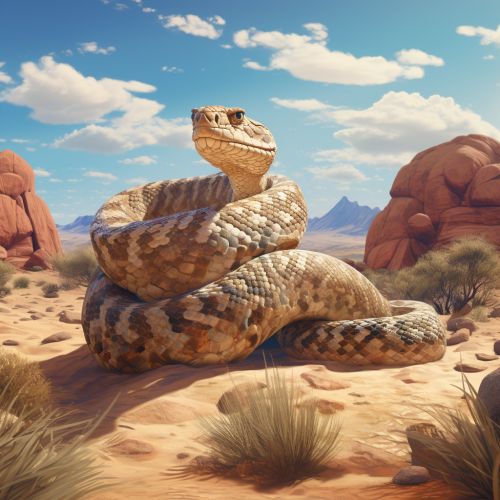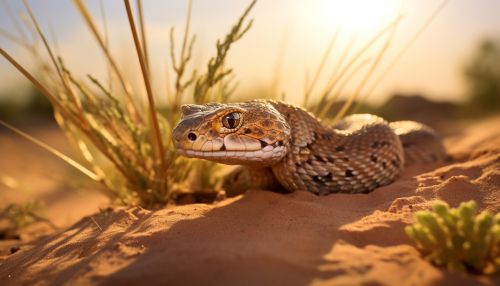Sidewinder
Overview
The Sidewinder is a species of venomous pit viper, scientifically known as Crotalus cerastes, native to the deserts of southwestern United States and northwestern Mexico. It is characterized by its unique method of locomotion, known as sidewinding, which allows it to move swiftly across sandy and hot surfaces, hence its common name. The sidewinder is a small snake, typically measuring between 17 and 30 inches in length, with a distinctive horn-like structure above each eye.


Description
The sidewinder is a relatively small, stout-bodied snake with a broad, triangular head. Its coloration varies from pale cream to dark brown, often matching the color of the desert sand. The most distinctive feature of the sidewinder is the supraocular scales, which are raised to form horn-like structures above the eyes. These "horns" are believed to serve multiple functions, including protection from sand and sun, and possibly aiding in camouflage.
Habitat and Distribution
The sidewinder is found in the arid regions of southwestern United States, specifically in the Mojave, Sonoran, and Colorado Deserts, and extends into the northwestern part of Mexico. It prefers sandy or gravelly desert habitats, often with scattered vegetation such as creosote bush and desert scrub. The snake is well adapted to this harsh environment, with its coloration providing excellent camouflage against the desert sand.
Behavior and Ecology
The sidewinder is primarily nocturnal, being most active during the cooler hours of the night. During the day, it buries itself in the sand to avoid the intense desert heat. Its diet primarily consists of small rodents, lizards, and occasionally birds. The sidewinder is an ambush predator, lying in wait for its prey and delivering a quick, venomous strike.
The sidewinder's unique method of locomotion, known as sidewinding, is an adaptation to the loose, shifting sands of its desert habitat. This form of movement involves the snake lifting a loop of its body off the ground and moving it forward, while the rest of the body follows. This allows the sidewinder to move quickly across the sand without sinking into it.
Reproduction
The sidewinder is ovoviviparous, meaning the females give birth to live young. Mating occurs in the spring, and females give birth to between 5 and 18 young in the late summer or early fall. The young sidewinders are independent at birth and receive no parental care.
Venom
The venom of the sidewinder is less potent than that of many other rattlesnakes, but it is still capable of causing serious injury or death in humans if not treated promptly. The venom contains a complex mixture of proteins and enzymes, including neurotoxins and hemotoxins, which can cause tissue damage and affect the nervous system.
Conservation Status
The sidewinder is not currently listed as threatened or endangered. However, like many desert species, it faces threats from habitat loss due to human development and climate change.
